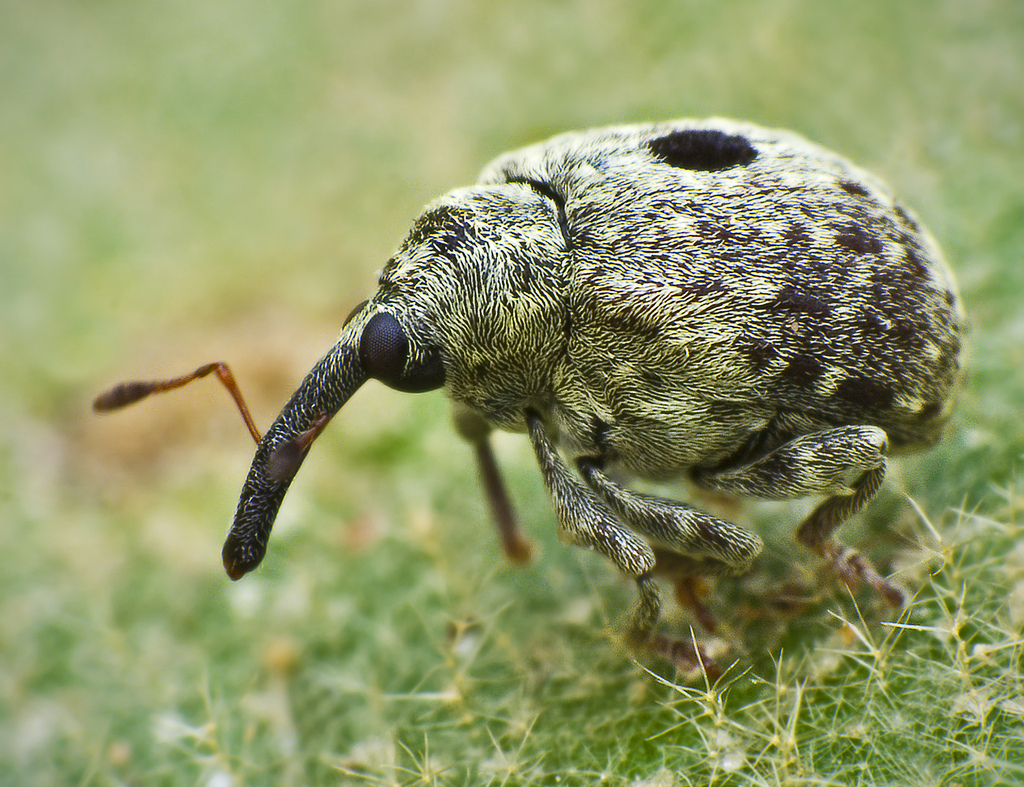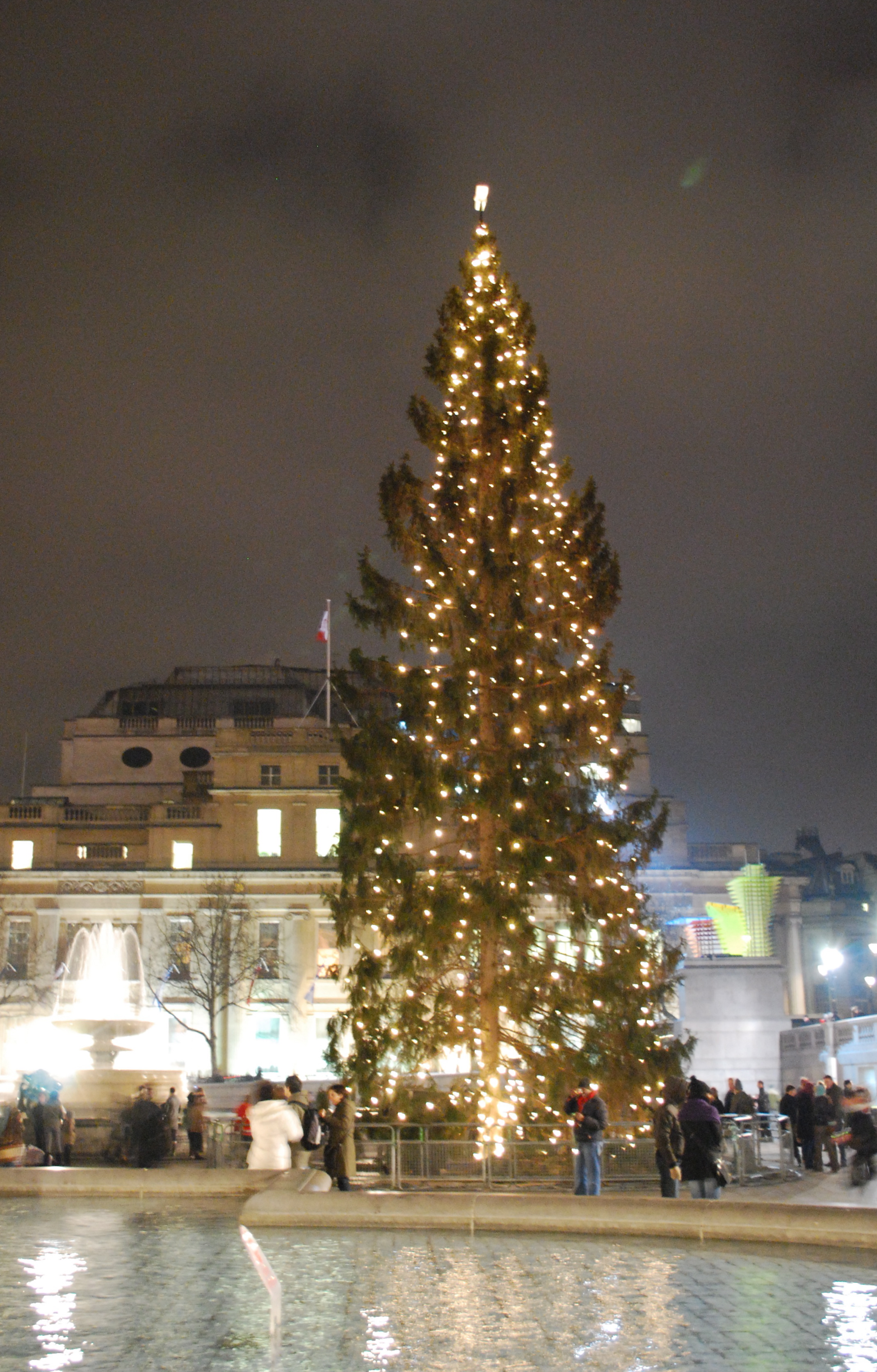|
Cryphalus Saltuarius
''Cryphalus saltuarius'' - ''Cryphalus asperatus'' is a small bark beetle (subfamily Scolytinae, family Curculionidae), around 1.8 mm long, that infests mainly spruce trees (''Picea''), less often other conifers. It has been recorded mainly from northern Europe and is occasionally regarded as a secondary pest. However, it attacks primarily weakened and freshly dead branches of its host trees. Description The adult beetle is between 1.7 and 2.0 mm long (average 1.8 mm) and 2.3x longer than wide. The colour is dark brown to black. It is characterized by the morphology of its antennae, the pronotum, the elytra and the male aedeagus. ''Cryphalus saltuarius'' is similar to '' Cryphalus abietis'' and can be confused with that species. However, ''C. saltuarius'' is slightly larger and can be separated by its elytra, the pronotum as well as by the shape of the male aedeagus. Distribution ''Cryphalus saltuarius'' is common in Scandinavia and has been also reported from othe ... [...More Info...] [...Related Items...] OR: [Wikipedia] [Google] [Baidu] |
Bark Beetle
A bark beetle is the common name for the subfamily of beetles Scolytinae. Previously, this was considered a distinct family (Scolytidae), but is now understood to be a specialized clade of the "true weevil" family (Curculionidae). Although the term "bark beetle" refers to the fact that many species feed in the inner bark (phloem) layer of trees, the subfamily also has many species with other lifestyles, including some that bore into wood, feed in fruit and seeds, or tunnel into herbaceous plants. Well-known species are members of the type genus '' Scolytus'', namely the European elm bark beetle ''S. multistriatus'' and the large elm bark beetle ''S. scolytus'', which like the American elm bark beetle '' Hylurgopinus rufipes'', transmit Dutch elm disease fungi (''Ophiostoma''). The mountain pine beetle ''Dendroctonus ponderosae'', southern pine beetle '' Dendroctonus frontalis'', and their near relatives are major pests of conifer forests in North America. A similarly aggres ... [...More Info...] [...Related Items...] OR: [Wikipedia] [Google] [Baidu] |
Curculionidae
The Curculionidae are a family of weevils, commonly called snout beetles or true weevils. They are one of the largest animal families with 6,800 genera and 83,000 species described worldwide. They are the sister group to the family Brentidae. They include the bark beetles as the subfamily Scolytinae, which are modified in shape in accordance with their wood-boring lifestyle. They do not much resemble other weevils, so they were traditionally considered a distinct family, Scolytidae. The family also includes the ambrosia beetles, of which the present-day subfamily Platypodinae was formerly considered the distinct family Platypodidae. Description Adult Curculionidae can be recognised by the well-developed, downwards-curved snout (Rostrum (anatomy), rostrum) possessed by many species, though the rostrum is sometimes short (e.g. Entiminae). They have elbowed Antenna (biology), antennae that end in clubs, and the first antennal segment often fits into a groove in the side of the rost ... [...More Info...] [...Related Items...] OR: [Wikipedia] [Google] [Baidu] |
Spruce
A spruce is a tree of the genus ''Picea'' ( ), a genus of about 40 species of coniferous evergreen trees in the family Pinaceae, found in the northern temperate and boreal ecosystem, boreal (taiga) regions of the Northern hemisphere. ''Picea'' is the sole genus in the subfamily Piceoideae. Spruces are large trees, from about 20 to 60 m (about 60–200 ft) tall when mature, and have Whorl (botany), whorled branches and cone (geometry), conical form. Spruces can be distinguished from other Genus, genera of the family Pinaceae by their pine needle, needles (leaves), which are four-sided and attached singly to small persistent peg-like structures (pulvini or sterigmata) on the branches, and by their seed cone, cones (without any protruding bracts), which hang downwards after they are pollinated. The needles are shed when 4–10 years old, leaving the branches rough with the retained pegs. In other similar genera, the branches are fairly smooth. Spruce are used as food pla ... [...More Info...] [...Related Items...] OR: [Wikipedia] [Google] [Baidu] |
Cryphalus Abietis
''Cryphalus abietis'' is a small bark beetle (subfamily Scolytinae, family Curculionidae), around 1.6 mm long, that is widely distributed in Europe. It infests mainly spruce trees (''Picea''), but also other conifers. Like closely related species, e.g. ''Cryphalus saltuarius'', ''C. abietis'' attacks primarily weakened and freshly dead branches of its host trees, and usually does not kill trees. Taxonomy While ''C. abietis'' is well known in the German literature, its taxonomy has been often confused elsewhere due to its similarity with ''Cryphalus saltuarius'', the destruction of its type specimens during World War II, and a statement by Wood in 1972 that it is a synonym of ''Cryphalus asperatus''. For example, Justesen et al. provided detailed descriptions of ''C. abietis'' and its biology under the name "''Cryphalus asperatus'' (Gyllenhal, 1813), syn. ''Bostrichus abietis'' Ratzeburg, 1837". However, the authors clarified in a subsequent publication that ''Cryphalus abie ... [...More Info...] [...Related Items...] OR: [Wikipedia] [Google] [Baidu] |
Picea Abies
''Picea abies'', the Norway spruce or European spruce, is a species of spruce native to Northern Europe, Northern, Central Europe, Central and Eastern Europe. It has branchlets that typically hang downwards, and the largest cones of any spruce, 9–17 cm long. It is very closely related to the Siberian spruce (''Picea obovata''), which replaces it east of the Ural Mountains, and with which it hybridizes freely. The Norway spruce has a wide distribution for it being planted for its wood, and is the species used as the main Christmas tree in several countries around the world. It was the first gymnosperm to have its genome sequenced. The Latin binomial nomenclature, specific epithet ''abies'' means "like ''Abies'', Fir tree". Description Norway spruce is a large, fast-growing evergreen coniferous tree growing tall and with a trunk diameter of 1 to 1.5 m. It can grow fast when young, up to 1 m per year for the first 25 years under good conditions, but becomes slower once over ... [...More Info...] [...Related Items...] OR: [Wikipedia] [Google] [Baidu] |
Pine
A pine is any conifer tree or shrub in the genus ''Pinus'' () of the family Pinaceae. ''Pinus'' is the sole genus in the subfamily Pinoideae. ''World Flora Online'' accepts 134 species-rank taxa (119 species and 15 nothospecies) of pines as current, with additional synonyms, and ''Plants of the World Online'' 126 species-rank taxa (113 species and 13 nothospecies), making it the largest genus among the conifers. The highest species diversity of pines is found in Mexico. Pines are widely species distribution, distributed in the Northern Hemisphere; they occupy large areas of boreal forest, but are found in many habitats, including the Mediterranean Basin, and dry tropical forests in southeast Asia and Central America. Wood from pine trees is one of the most extensively used types of timber, and some pines are widely used as Christmas trees. Description Pine trees are evergreen, coniferous resinous trees (or, rarely, shrubs) growing tall, with the majority of species reachin ... [...More Info...] [...Related Items...] OR: [Wikipedia] [Google] [Baidu] |
Leonard Gyllenhaal
Leonard Gyllenhaal (3 December 1752 – 13 May 1840) was a Swedish nobleman, military officer and entomologist. Early life and ancestry Born on the Ribbingsberg manor in Västergötland in west Sweden, Leonard Gyllenhaal was son of Hans Reinhold Gyllenhaal (1724–1796), an army officer, by his wife, Anna Catharina Wahlfelt (1723–1799). By birth, he belonged to a Gyllenhaal family, which was part of the Swedish nobility. Biography He went to school ''Skara trivialskola'' in the cathedral town of Skara together with, among others, the future poet Johan Henrik Kellgren, and later renowned naturalists Anders Dahl and the brothers Adam and Johan Afzelius, with whom he went on natural excursions. Like some of his friends, he went to Uppsala to study under Linnaeus in 1769. He never matriculated and remained in Uppsala only one semester, before switching to a military career in accordance with the wishes and traditions of the family, enrolling in the '' Adelsfanan'' ( ... [...More Info...] [...Related Items...] OR: [Wikipedia] [Google] [Baidu] |
Julius Theodor Christian Ratzeburg
Julius Theodor Christian Ratzeburg (16 February 1801– 24 October 1871) was a German zoology, zoologist, botany, botanist, entomology, entomologist, and forestry, forester. Biography Ratzeburg was born in Berlin, the son of a professor at the veterinary school of the Humboldt University of Berlin, University of Berlin. He studied medicine and natural sciences in Berlin and was primarily interested in botany. He became a privatdocent, private lecturer at the University of Berlin in 1828, when he was in contact with Alexander von Humboldt, Alexander and Wilhelm von Humboldt. Two years later, he became professor of natural history there at the invitation of Friedrich Wilhelm Leopold Pfeil (1783-1859). He founded the botanic garden of forestry at Eberswalde, working there until his retirement in 1869. He returned to Berlin, where he resided until his death. Ratzeburg was the author of important works on forestry and forest entomology, and is considered the founder of the latter d ... [...More Info...] [...Related Items...] OR: [Wikipedia] [Google] [Baidu] |
Edmund Reitter
Edmund Reitter (22 October 1845 – 15 March 1920) was an Austrian entomologist, writer and a collector. Biography Edmund Reitter was best known as an expert on the beetles of the Palaearctic. He was an imperial advisor and editor of the ''Wiener Entomologischen Zeitung'', (Vienna Entomological Gazette). In addition he was a member and honorary member of Deutsche Gesellschaft für allgemeine und angewandte Entomologie in Berlin, the Vereins für schlesische Insektenkunde in Breslau, the Museum Francisco-Carolinum in Linz, the Vereins für Naturkunde (Association for Natural History) in Austria, the Société entomologique de Russie in Saint Petersburg, the Société royale entomologique d'Égypte and the Nederlandse Entomologische Vereniging in Rotterdam. He was also known as an insect dealer. In 1909, Reitter identified the '' Bryophacis'' beetle. As a corresponding member he worked with the Naturwissenschaftlichen Verein in Troppau, the Socíetas pro Fauna et Flora fen ... [...More Info...] [...Related Items...] OR: [Wikipedia] [Google] [Baidu] |
International Commission On Zoological Nomenclature
The International Commission on Zoological Nomenclature (ICZN) is an organization dedicated to "achieving stability and sense in the scientific naming of animals". Founded in 1895, it currently comprises 26 commissioners from 20 countries. Organization The ICZN is governed by the "Constitution of the ICZN", which is usually published together with the ICZN Code. Members are elected by the Section of Zoological Nomenclature, established by the International Union of Biological Sciences (IUBS). The regular term of service of a member of the Commission is six years. Members can be re-elected up to a total of three full six-year terms in a row. After 18 continuous years of elected service, a break of at least three years is prescribed before the member can stand again for election. Activities Since 2014, the work of the Commission is supported by a small secretariat based at the National University of Singapore, in Singapore. Previously, the secretariat was based in London and f ... [...More Info...] [...Related Items...] OR: [Wikipedia] [Google] [Baidu] |
Scolytinae
A bark beetle is the common name for the subfamily of beetles Scolytinae. Previously, this was considered a distinct family (Scolytidae), but is now understood to be a specialized clade of the "true weevil" family (Curculionidae). Although the term "bark beetle" refers to the fact that many species feed in the inner bark (phloem) layer of trees, the subfamily also has many species with other lifestyles, including some that bore into wood, feed in fruit and seeds, or tunnel into herbaceous plants. Well-known species are members of the type genus '' Scolytus'', namely the European elm bark beetle ''S. multistriatus'' and the large elm bark beetle ''S. scolytus'', which like the American elm bark beetle '' Hylurgopinus rufipes'', transmit Dutch elm disease fungi (''Ophiostoma''). The mountain pine beetle ''Dendroctonus ponderosae'', southern pine beetle '' Dendroctonus frontalis'', and their near relatives are major pests of conifer forests in North America. A similarly aggre ... [...More Info...] [...Related Items...] OR: [Wikipedia] [Google] [Baidu] |

